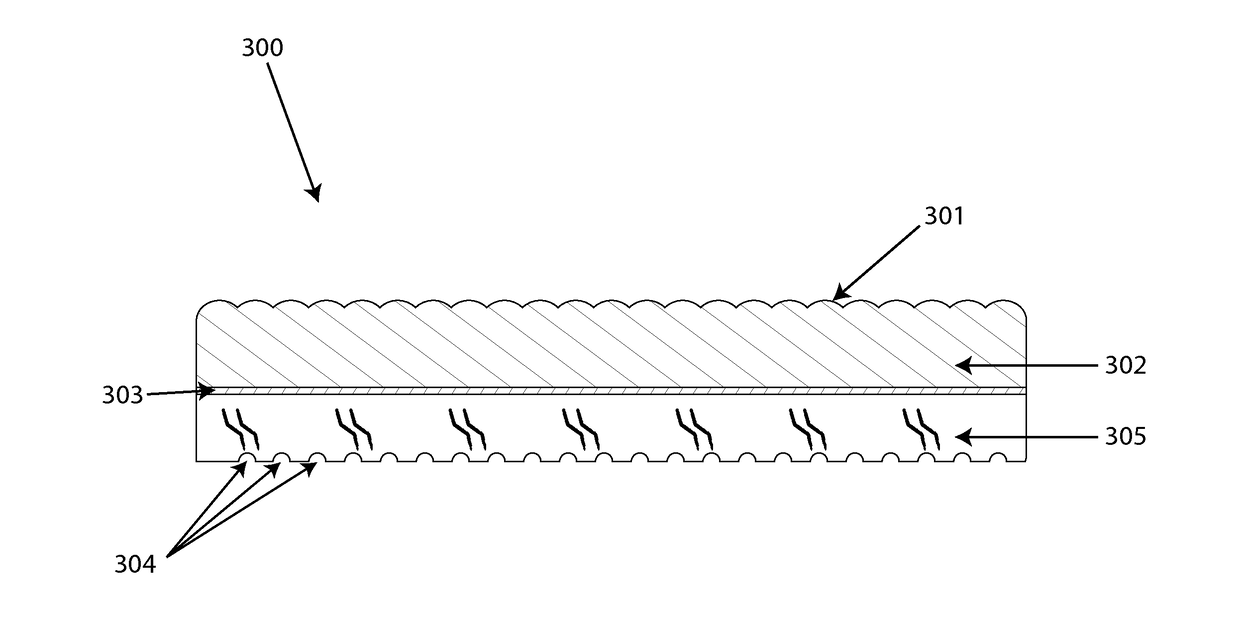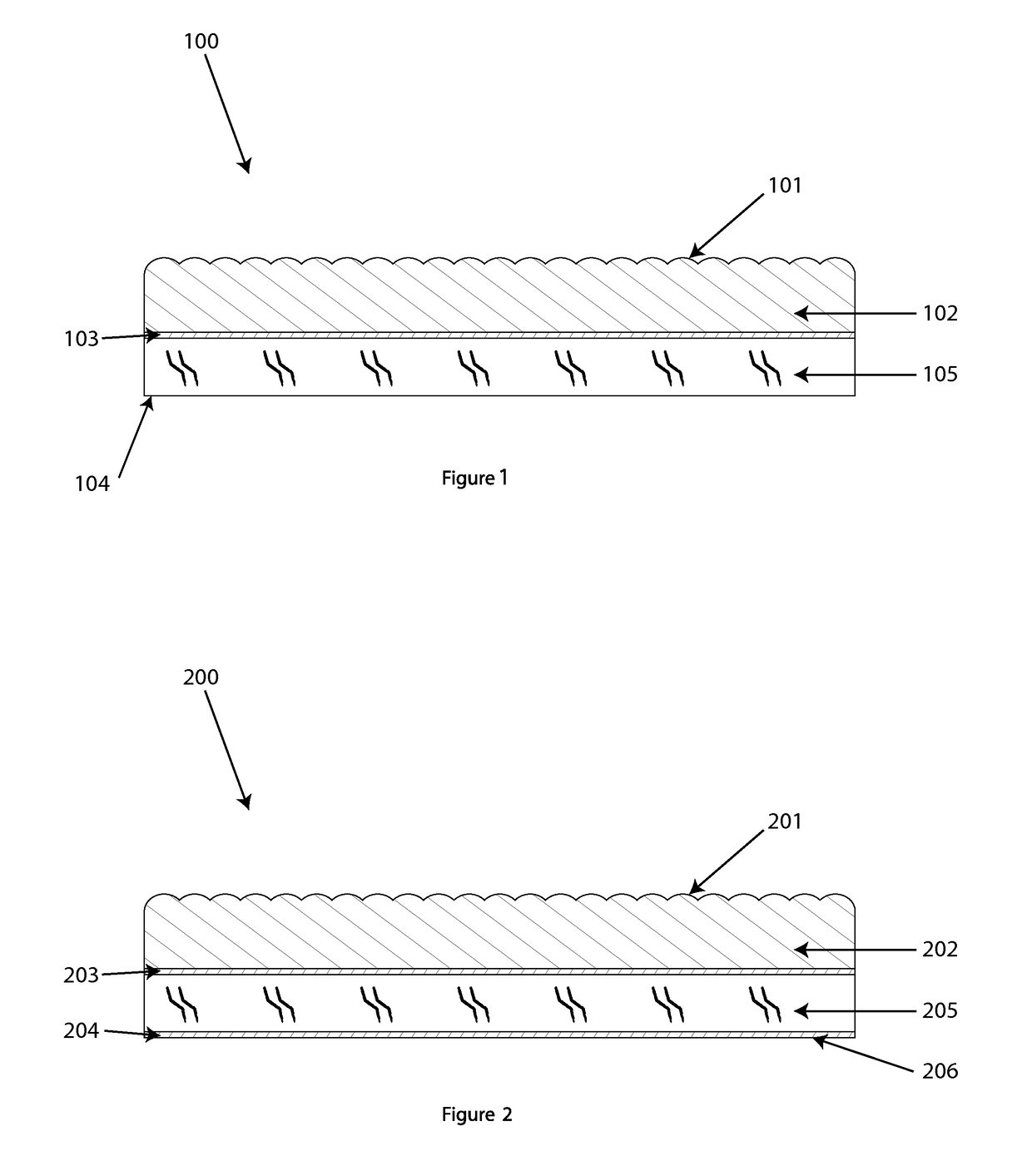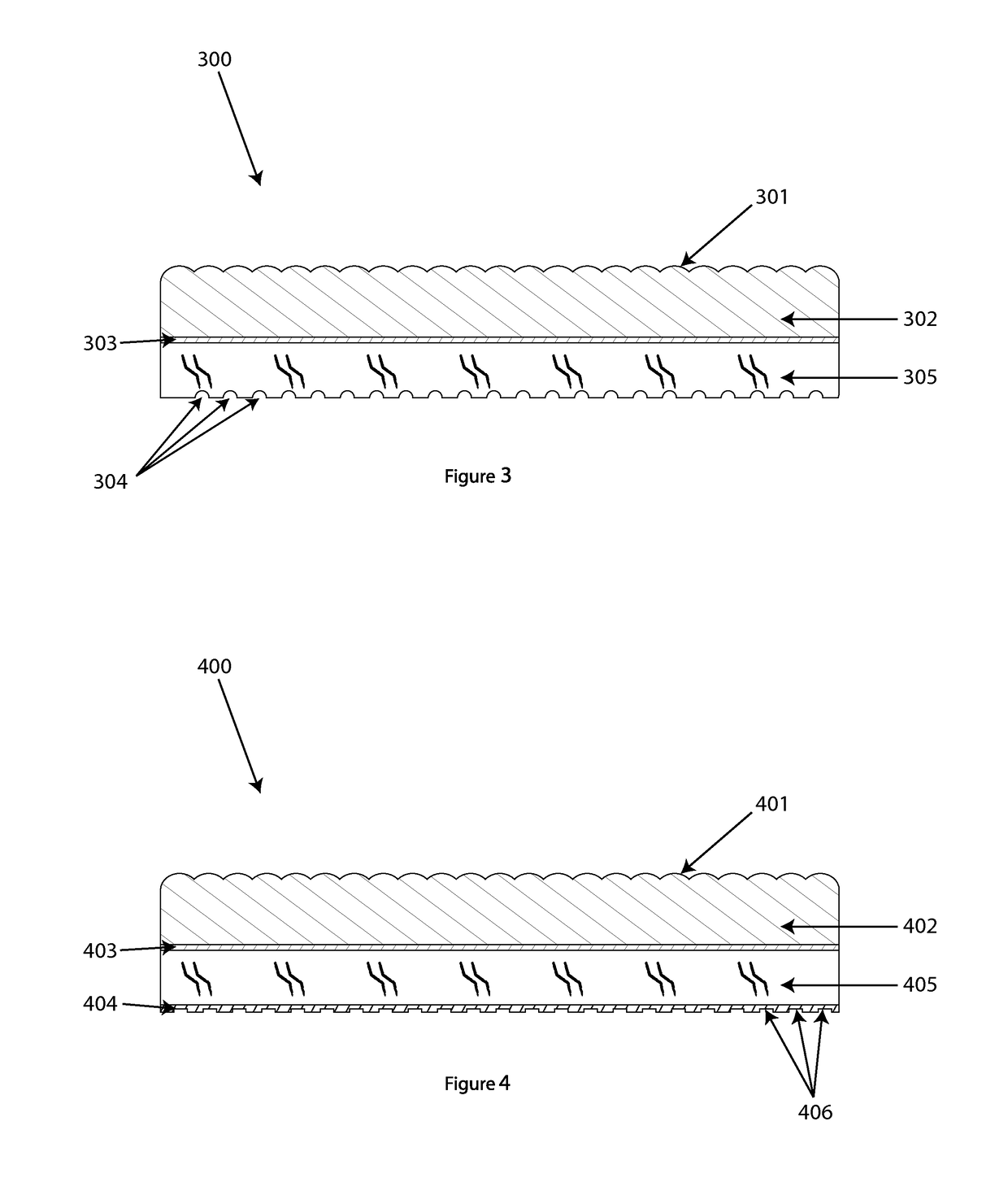Multilayered Press Stable Lens Array Film
- Summary
- Abstract
- Description
- Claims
- Application Information
AI Technical Summary
Benefits of technology
Problems solved by technology
Method used
Image
Examples
Embodiment Construction
[0036]FIG. 1 is an example of one embodiment of the disclosure: a thin, dimensionally stable, multilayer, flexible, press stable lens array film structure (100), providing an outer facing lens array surface layer (102) made of a transparent polymeric highly flexible non-oriented material, having a first and second side, where the first side includes a printed, formed, or embossed outwardly facing lens array relief surface (101), and the second side is bonded to a biaxially oriented thermo-mechanically dimensionally press stable transparent polymeric base layer (105), by using heat and pressure which melts a transparent thermo-bonding polymer layer (103) which is an integral co-extruded top layer of the press stable polymeric base layer (105), where a gloss surface is imparted onto the polymeric base layer (104) to assist in high resolution printing.
[0037]FIG. 2 shows another embodiment of the disclosure: a thin, dimensionally stable, multilayer, flexible, press stable lens array fil...
PUM
| Property | Measurement | Unit |
|---|---|---|
| Length | aaaaa | aaaaa |
| Length | aaaaa | aaaaa |
| Length | aaaaa | aaaaa |
Abstract
Description
Claims
Application Information
 Login to view more
Login to view more - R&D Engineer
- R&D Manager
- IP Professional
- Industry Leading Data Capabilities
- Powerful AI technology
- Patent DNA Extraction
Browse by: Latest US Patents, China's latest patents, Technical Efficacy Thesaurus, Application Domain, Technology Topic.
© 2024 PatSnap. All rights reserved.Legal|Privacy policy|Modern Slavery Act Transparency Statement|Sitemap



